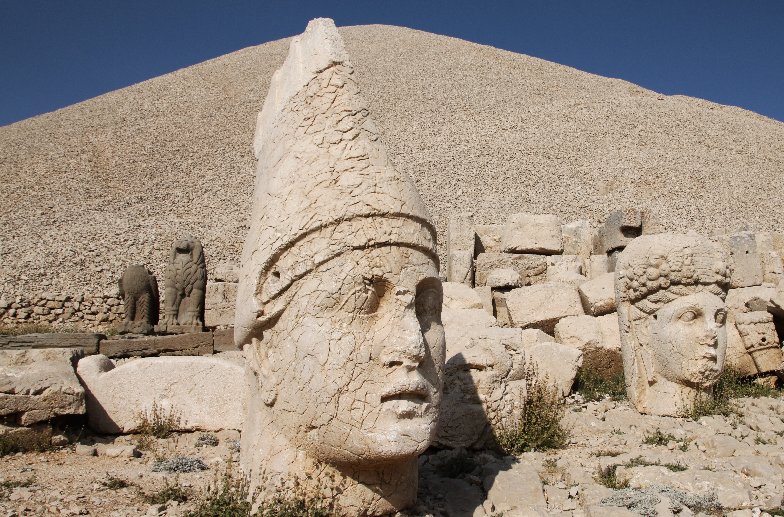Mount Nemrut: ‘Throne Of The Gods’ – Mysterious Royal Tomb Surrounded By Gigantic Sculptures
A. Sutherland - AncientPages.com - Mount Nemrut is an awe-inspiring and enigmatic place located on one of the highest peaks of the Eastern Taurus mountain range, at an altitude of over 2,000 m above sea level, in south-east Turkey.
We know this ancient place as Nemrut Dagi - the Hierotheseion (temple-tomb and the house of the gods) built by the late Hellenistic King Antiochos I of Commagene (69-34 B.C.), who dedicated it to himself.
Western terrace of the Nemrut Dagi, Turkey: Antiochos (left); Herakles (right). Credit: Bernard Gagnon/ Wikipedia
The unique mountain top shrine was completely unknown to all until its discovery in 1881 by German engineer Karl Sester. At the time of the discovery, the megalithic statues were said to be intact. Archaeological excavations began for the first time in 1953 when the American School of Oriental Research conducted precise surveys of the site.
With a diameter of 145 m, the 50 m high funerary mound of stone chips is surrounded on three sides by terraces to the east, west, and north directions. Two separate antique processional routes radiate from the east and west terraces.
Antiochus I's sanctuary is flanked by huge statues 8-9 m (26-30 ft) high of himself, two lions, two eagles, and various Greek, Armenian, and Iranian gods, such as Vahagn-Hercules, Aramazd-Zeus, or Oromasdes (associated with the Iranian god Ahura Mazda), Bakht-Tyche, and Mihr-Apollo-Mithras.
Mount Nemrut - East Terrace Nemrut. Image credit: Klearchos Kapoutsis, Santorini, Greece via wikipedia
These statues were once seated, with names of each god inscribed on them. Later, the heads of the statues have been removed from their bodies and most likely deliberately damaged (especially their noses). Today they are found scattered throughout the site but they have never been restored to their original locations. Additionally, after numerous earthquakes and devastation, the stone heads look as if they have been cut off from the trunk.
The site also preserves stone slabs with bas-relief figures that are thought to have formed a large frieze. These slabs display the ancestors of Antiochus, who included Armenians, Greeks, and Persians. The Hierotheseion of Antiochos I is one of the most ambitious constructions of the Hellenistic period.
A highly developed technology was used to build the colossal statues and stelae, the equal of which has not been found anywhere else for this period. The syncretism of its pantheon and the lineage of its kings, which can be traced back through two sets of legends, Greek and Persian, is evidence of the dual origin of this kingdom's culture.
Is There A Treasure Hidden On The Top Of Mount Nemrut?
Are ancient secrets hidden inside the mountain? Archaeologists believe that the mound hides the tomb of King Antioch, but they are not entirely convinced. In addition, there are numerous legends about the treasure hidden on the top of the mountain.
However, the truth regarding both the tomb and possible treasures has not been revealed during archaeological studies lasting for more than half a century. Even the use of dynamite, which only lowered the mound by 5 m, did not reveal anything of value.
Archaeologists have found an ancient glass shaft, which according to experts indicates a unique knowledge of advanced astronomy of people of that period. It runs towards the slope at an angle of 35 degrees and is about 150 meters long. Computer analysis has shown that two days of the year, the sun’s rays would illuminate the bottom of the shaft - once when in line with the constellation of Leo and another time when in line with Orion.
The ancient kingdom of Kommagene (Commagene) - a small mountain kingdom located in what was Asia Minor, in Eastern Anatolia - was relatively short-lived but it survived as an independent kingdom until 72 AD when it was incorporated into the Roman Empire.
Mount Nemrut - West Terrace. Left: the head of Apollo/Mithra/Helios/Hermes. Klearchos Kapoutsis, Santorini, Greece/Wikipedia
The magnificent Nemrut statues are located within a first-degree earthquake zone very close to the East Anatolian Fault, which is seismically active. Therefore, the tumulus, statues, and stelae are vulnerable to earthquakes. The height of the tumulus has been reduced from its estimated original 60 m due to weathering, previous uncontrolled research investigations, and climbing by visitors.
The first version of this article was originally published on August 6, 2015
Written by – A. Sutherland - AncientPages.com Senior Staff Writer
Copyright © AncientPages.com All rights reserved. This material may not be published, broadcast, rewritten or redistributed in whole or part without the express written permission of AncientPages.com
More From Ancient Pages
-
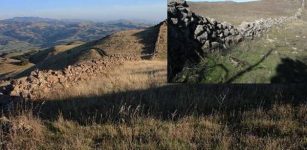 Mystery Of Great Wall Of California: An Ancient Unsolved Enigma
Civilizations | Sep 11, 2018
Mystery Of Great Wall Of California: An Ancient Unsolved Enigma
Civilizations | Sep 11, 2018 -
 Curly Hair Protected The Brain Of Early Humans And Helped It Grow
Human Beginnings | Aug 31, 2023
Curly Hair Protected The Brain Of Early Humans And Helped It Grow
Human Beginnings | Aug 31, 2023 -
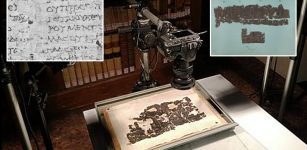 Carbonized Herculaneum Papyrus Begins Revealing Its Ancient And Historical Secrets
Artifacts | Apr 24, 2024
Carbonized Herculaneum Papyrus Begins Revealing Its Ancient And Historical Secrets
Artifacts | Apr 24, 2024 -
 An Ancient Goldsmith’s Unexplained Encounters With The Unknown
Ancient Mysteries | Apr 16, 2019
An Ancient Goldsmith’s Unexplained Encounters With The Unknown
Ancient Mysteries | Apr 16, 2019 -
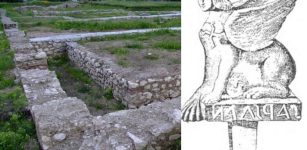 Mysterious Inscription On Naxian-Style Sphinx From Dacia Deciphered
Archaeology | Jan 15, 2024
Mysterious Inscription On Naxian-Style Sphinx From Dacia Deciphered
Archaeology | Jan 15, 2024 -
 Pan Twardowski – The Man Who Sold His Soul To The Devil In Exchange For Special Powers
Featured Stories | Aug 12, 2021
Pan Twardowski – The Man Who Sold His Soul To The Devil In Exchange For Special Powers
Featured Stories | Aug 12, 2021 -
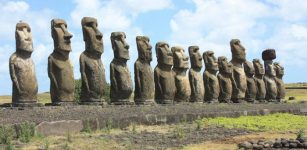 New Attempt To Solve The Easter Island Mystery – What Did Rapa Nui Look Like Before Europeans Arrived?
Archaeology | Sep 20, 2017
New Attempt To Solve The Easter Island Mystery – What Did Rapa Nui Look Like Before Europeans Arrived?
Archaeology | Sep 20, 2017 -
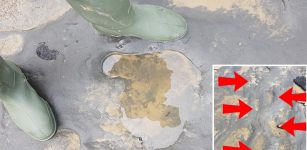 Oldest Footprints In Europe Belonged To A Mysterious 950,000-Year-Old Ancestor
Archaeology | Jul 22, 2019
Oldest Footprints In Europe Belonged To A Mysterious 950,000-Year-Old Ancestor
Archaeology | Jul 22, 2019 -
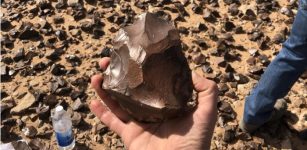 1.5-Million-Year-Old Hand Axes And Hundreds Of Ancient Artifacts Found In The Iraqi Desert
Human Beginnings | Jan 31, 2025
1.5-Million-Year-Old Hand Axes And Hundreds Of Ancient Artifacts Found In The Iraqi Desert
Human Beginnings | Jan 31, 2025 -
 Comet Strike 13,000 Years Ago May Have Changed Human Civilization
Archaeology | Jul 6, 2021
Comet Strike 13,000 Years Ago May Have Changed Human Civilization
Archaeology | Jul 6, 2021 -
 Mysterious Steles Of Mongolia – ‘Deer Stones’ In The Tsatsyn Ereg Necropolis
Archaeology | Jan 23, 2019
Mysterious Steles Of Mongolia – ‘Deer Stones’ In The Tsatsyn Ereg Necropolis
Archaeology | Jan 23, 2019 -
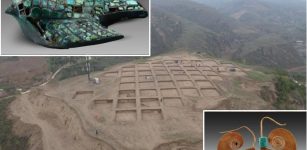 Fortified Bronze Age City Filled With Magnificent Ancient Treasures Solves A Mystery In China
Archaeology | Nov 21, 2023
Fortified Bronze Age City Filled With Magnificent Ancient Treasures Solves A Mystery In China
Archaeology | Nov 21, 2023 -
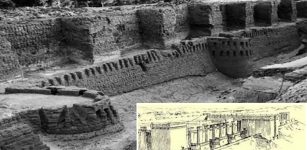 Massive Fortress Buhen In Ancient Capital Of Egyptian Nubia
Archaeology | Mar 20, 2017
Massive Fortress Buhen In Ancient Capital Of Egyptian Nubia
Archaeology | Mar 20, 2017 -
 Cretaceous Fossil From Antarctica Reveals Earliest Modern Bird
Fossils | Mar 6, 2025
Cretaceous Fossil From Antarctica Reveals Earliest Modern Bird
Fossils | Mar 6, 2025 -
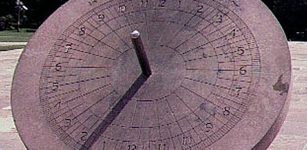 Gnomon: Ancient Time Measuring Instrument Used By Babylonians, Egyptians And Chinese
Ancient Technology | Nov 3, 2016
Gnomon: Ancient Time Measuring Instrument Used By Babylonians, Egyptians And Chinese
Ancient Technology | Nov 3, 2016 -
 Unkulunkulu: ‘Great Oldest One’ Progenitor Of Mankind, Creator Of All Things And Origin Of Death In Beliefs Of Zulu People
African Mythology | Sep 30, 2019
Unkulunkulu: ‘Great Oldest One’ Progenitor Of Mankind, Creator Of All Things And Origin Of Death In Beliefs Of Zulu People
African Mythology | Sep 30, 2019 -
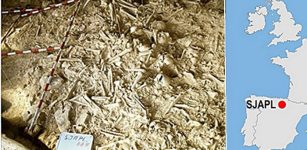 Earliest Period Of Warfare In Europe Occurred Over 1,000 Years Earlier Than We Thought
Archaeology | Nov 3, 2023
Earliest Period Of Warfare In Europe Occurred Over 1,000 Years Earlier Than We Thought
Archaeology | Nov 3, 2023 -
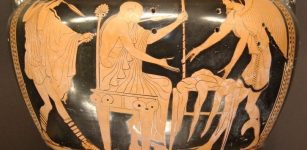 Prophet King Phineus Revealed The Future To Humans And Unleashed God Zeus’ Fury
Featured Stories | Nov 20, 2019
Prophet King Phineus Revealed The Future To Humans And Unleashed God Zeus’ Fury
Featured Stories | Nov 20, 2019 -
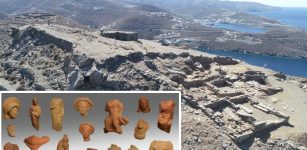 Over 2,000 Clay Figurines Discovered In The Ancient City Of Kythnos
Archaeology | Jun 10, 2023
Over 2,000 Clay Figurines Discovered In The Ancient City Of Kythnos
Archaeology | Jun 10, 2023 -
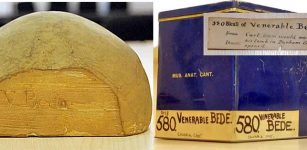 Medieval Burial Mystery: Enigma Of Missing Bones Of The Venerable Bede
News | Sep 10, 2015
Medieval Burial Mystery: Enigma Of Missing Bones Of The Venerable Bede
News | Sep 10, 2015



